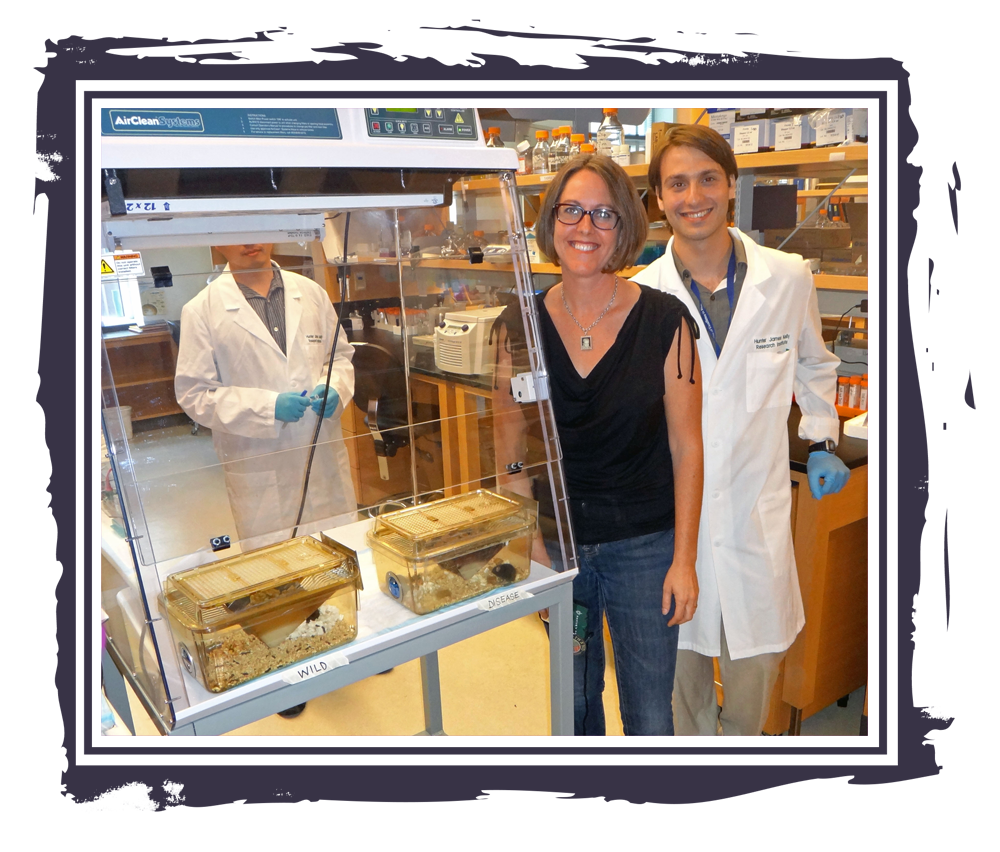RESEARCH
Using an integrated method of research, significant advancements are being made toward prevention, treatment and more-developed clinical care for Krabbe kids and those afflicted by other leukodystrophy diseases.

Krabbe Research
Research for Krabbe disease currently targets the different areas of disease development. Doctors and scientists are seeking to:*
- Develop gene therapy to substitute defective genes with normal-functioning genes.
- Create a synthetic enzyme to replace the missing GALC enzyme, therefore enabling the body to metabolize toxins and inhibit the accumulation of psychosine.
- Current treatment uses stem cell transplantion to provide the body with GALC producing stem cells.
- Explore ways to neutralize psychosine and halt demyelination.
- Promising research involves a drug that could counteract the effects of psychosine on nerve tissue, therefore inhibiting its destruction of myelin.
* It is important to note that newborn screening is essential for all these potential future-treatments; they would need to be administered before the brain begins demyelinating.
Myelin Repair Research
In leukodystophy diseases, the myelin sheath deteriorates. Therefore, all leukodystrophy diseases would benefit from myelin repair. This research seeks to restore the damaged tissue of the myelin sheath, which insulates the nerves, enabling the brain to regain communication with the body.
The implications of myelin repair research also have the potential to aid treatment for other devastating disorders including multiple sclerosis, stroke victims, and more.

To date, Judson’s Legacy has given
$120,058
toward leukodystrophy research,
focusing particularly on myelin repair.
Please help us raise more…
Krabbe Symptoms Krabbe Treatment
